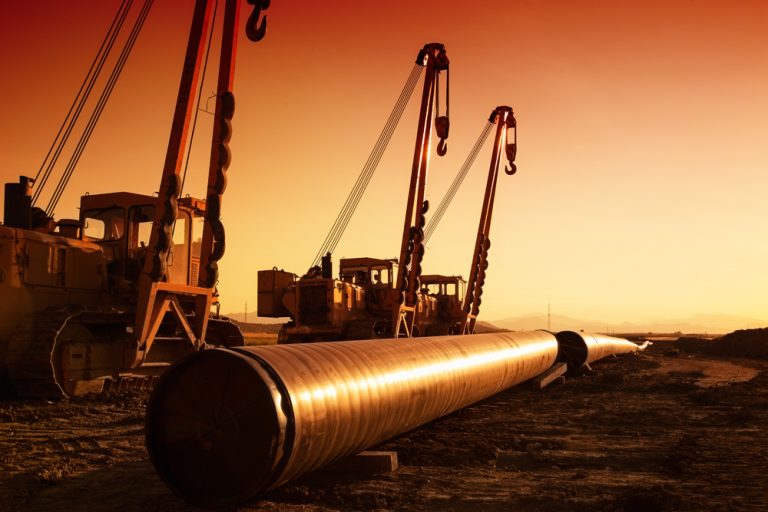

When I served as chairman of the Texas House Energy Resources Committee, we heard hundreds of hours of testimony on the need to increase our ability to safely and effectively move oil and gas from the Permian Basin, Eagle Ford and Barnett to our Gulf ports for export.
During my tenure, the Texas Legislature passed laws providing a balanced policy on oversight, regulations and safety, while bringing a common-sense approach promoting economic benefits to the local and state economies. Ensuring energy independence through thoughtful, market-based energy polices was a priority for me as a legislator. Now, I believe, both Texas and the nation must continue to invest in energy infrastructure and eliminate senseless barriers to energy pipeline development.


Investment in our nation’s energy infrastructure network has a wide range of benefits beyond affordable and efficient delivery of energy products to consumers. For example, the Texas oil and natural gas industry paid more than $14 billion in state and local taxes and state royalties in fiscal year 2018. That is the equivalent of $38 million each day that directly funds our schools, universities, roads and emergency responders.
According to the U.S. Department of Energy’s 2017 U.S. Energy and Employment Report, Texas LNG projects produced 143,459 jobs and, the Texas Oil and Gas Association reported that oil and natural gas will generate an economic benefit of an estimated $145 billion in Texas.
According to a recent Moody’s Investors Service report, a lack of pipelines to carry oil and natural gas out of the Permian basin in West Texas and southeastern New Mexico will limit exploration and production and weaken realized prices until late 2019, when new pipeline capacity comes online. The surge in Permian development over the past two years has constrained labor resources, exploration supplies, infrastructure and pipeline takeaway capacity for oil, natural gas liquids and gas.
Further, using the Permian Basin as a case study, production in 2018 alone exceeded 15 billion barrels, while total takeaway capacity was 5.5 billion barrels; in effect only 58% of total production went to market. New pipelines that will likely go into service at various times in 2019 and will alleviate the bottleneck — but until then, capacity constraints will likely limit producers’ activities.
In addition, flaring and venting of natural gas in the Permian Basin in Texas and New Mexico reached an all-time high in this year’s first quarter. This widespread waste of a valuable commodity is the result of persistent infrastructure challenges, a lack of enough takeaway capacity and natural gas storage and an unexpected outage on a key pipeline in the area.
Earlier this year, during a House Land and Resource Management Committee hearing addressing eminent domain issues, proponents of increasing Texas’ ability to get oil and gas to market testified that amid a crippling pipeline shortage in the Permian Basin, producers have two less-than-ideal options: flare off natural gas or shut down wells. Flaring is detrimental to our environment and potentially a drag on the economy. Consider urban areas such as San Antonio, which last year was designated by the Environmental Protection Agency (EPA) as a “nonattainment” area under federally mandated air quality standards. Producers are already flaring a historic amount of natural gas while states in the Northeast have recently resorted to relying on imported LNG for home heating during winter cold spells.
Texas has always led the nation in oil and gas innovation. We must use all the sensible tools within reach to maximize our abilities to safely and efficiently move our energy resources to consumer markets in the U.S. and to our allies around the globe.
This article originally published on TribTalk, a publication of the Texas Tribune.
Disclaimer: The information and views set out in this analysis are those of the author(s) and do not necessarily reflect the official opinion of Corridor Media. Neither Corridor Media and Corridor News nor any person acting on their behalf may be held responsible for the use which may be made of the information contained therein.
The San Marcos City Council received a presentation on the Sidewalk Maintenance and Gap Infill…
The San Marcos River Rollers have skated through obstacles after taking a two-year break during…
San Marcos Corridor News has been reporting on the incredible communities in the Hays County…
Visitors won't be able to swim in the crystal clear waters of the Jacobs Well Natural…
Looking to adopt or foster animals from the local shelter? Here are the San Marcos…
The Lone Star State leads the nation in labor-related accidents and especially workplace deaths and…
This website uses cookies.